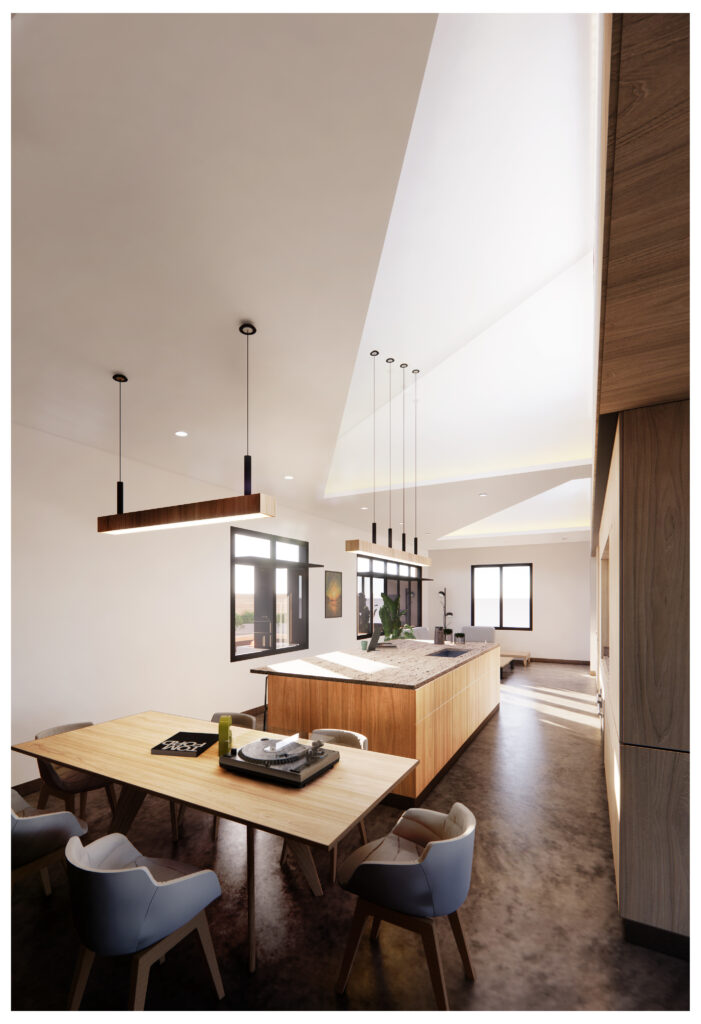Net Zero Begins at Home
Solar TexasSolar Texas is a collaborative project between the Texas A&M College of Architecture in partnership with the Brazos County non-profit Habitat for Humanity to bring resources to the working poor.
Creating a Sustainable Home for the Economically Vulnerable
Texas A&M University’s goal is to design and build a safe, high-performance, carbon-neutral, net-zero, and energy-generating attainable house. Through the process, we will foster community development, lifelong learning, health, wellness, and financial stability for “economically vulnerable” classes that breaks their cycle of poverty and amplifies the quality of life, health, and well-being.
Navigating to Net Zero
A Long-Term Strategy
By designing with our goals in mind, we specified innovations that would allow for a net-zero energy building that accommodates a long-term affordable home for a single-family. Despite the anticipated higher upfront cost, these innovative strategies will save the family money over the long term.
Building a Prototype
The student team used data from their life cycle analysis of the most recently built, local Habitat for Humanity projects as a baseline to design a prototype that optimizes energy efficiency and resource sustainability as a proposed model for future Habitat projects.
Leveraging Local Connections
Solar Texas leverages its partnership with Habitat for Humanity by obtaining most of its materials from local vendors willing to donate excess material for construction. The project will use a combination of student and volunteer labor to reduce labor costs and increase learning opportunities for Texas A&M University students.

About the Design
The building site is in the City of Bryan. The design achieves net-zero status first by using passive design strategies to drive down energy loads via site orientation, a combination of overhangs and shading devices designed to minimize solar heat gain and maximize the use of natural daylight.
